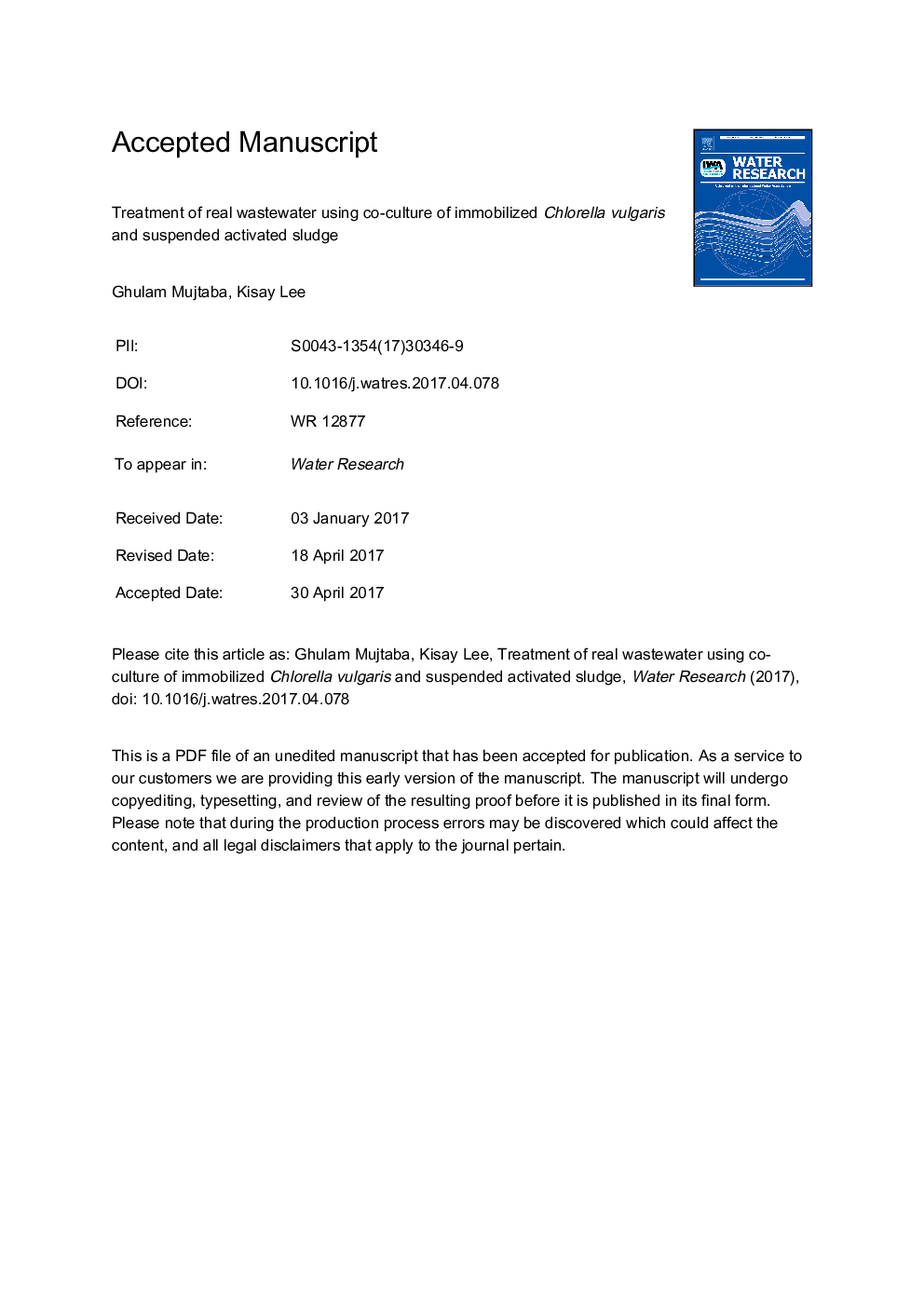| Article ID | Journal | Published Year | Pages | File Type |
|---|---|---|---|---|
| 5759179 | Water Research | 2017 | 37 Pages |
Abstract
The use of algal-bacterial symbiotic association establishes a sustainable and cost-effective strategy in wastewater treatment. Using municipal wastewater, the removal performances of inorganic nutrients (nitrogen and phosphorus) and organic pollutants were investigated by the co-culture system having different inoculum ratios (R) of suspended activated sludge to alginate-immobilized microalgae Chlorella vulgaris. The co-culture reactors with lower R ratios obtained more removal of nitrogen than in pure culture of C. vulgaris. The reactor with R = 0.5 (sludge/microalgae) showed the highest performance representing 66% removal after 24 h and 95% removal after 84 h. Phosphorus was completely eliminated (100%) in the co-culture system with inoculum ratios of 0.5 and 1.0 after 24 h and in the pure C. vulgaris culture after 36 h. The COD level was greatly reduced in the activated sludge reactor, while, it was increasing in pure C. vulgaris culture after 24 h of incubation. However, COD was almost stabilized after 24 h in the reactors with high R ratios such as 2.0, 5.0, and 10 due to the higher concentration of activated sludge. The growth of C. vulgaris was promoted from 0.03 g/L/d to 0.05 g/L/d in the co-culture of low inoculum ratios such as R = 0.5, implying that there exist an optimum inoculum ratio in the co-culture system in order to achieve efficient removal of nutrients.
Related Topics
Physical Sciences and Engineering
Earth and Planetary Sciences
Earth-Surface Processes
Authors
Ghulam Mujtaba, Kisay Lee,
